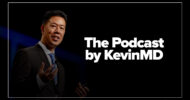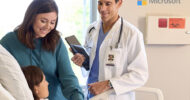 This article is sponsored by Augmedix: Ambient medical documentation and live clinical support powered by virtual scribes.
This article is sponsored by Augmedix: Ambient medical documentation and live clinical support powered by virtual scribes.
2020 was a remarkable year by almost any standard. In health care especially, we’ve seen COVID-19 catalyze years of growth and innovation in less than 12 months. Assistive technologies were developed to meet challenges in record time, and encouragingly positive changes in how we practice medicine seem to bode well for the future.
What will 2021 bring? Here are ten areas to watch in the coming year:
Telehealth. Telemedicine, a subset of the broader telehealth industry, has become a standard operating procedure for many clinicians and their patients. Clinicians who were once nose-to-laptop screen during a patient visit must now look up to connect with patients who are at home. It also poises providers for concierge medicine, where clinicians can be available on retainer to patients upon request or for extended hours.
Mental health services. COVID-19 has created a surge in telemedicine for mental health services which shows no signs of slowing down as we enter 2021. This is a particularly positive trend as we’ve seen the effectiveness of technological avenues for connecting mental health clinicians to their patients at a time when it was most crucial.
Asynchronous care. This type of care is expanding, if not entirely a new practice. When radiologists interpret x-rays outside the patient’s appointment, they’re providing care asynchronously. Primary- and specialist-care providers are finding innovative ways of extending this approach, using text and media-sharing (a patient can send a photo of her rash to the dermatologist) to communicate with their patients and other specialists for consultation.
Digital “front door.” Messaging, scheduling, and triaging are functions that can be automated in some situations by technology that’s meant to augment rather than replace in-person contact. Patients want the ability to schedule online, as they’re able to do with many other service providers. And as machine learning improves, a patient’s history and risk factors can be automatically incorporated into a triaging function that takes care of patients from the safety of their own homes.
Self-service care. Health care has been slowly transitioning in this area but trends toward improving patient experience – and now COVID-19 – are motivating shifts to features like clinician searches, digital billing, and even self-diagnosis tools. Another example is home check-in, which is faster than conveying information pre-appointment in the office and minimizes time in the waiting room.
Remote workforces. Another trend that’s accelerated thanks to the pandemic, remote workforces support workplace safety, expand workforce capacity (one radiologist can support multiple locations), and enhance employee morale, productivity, and efficiency.
Population health focus. Focusing on outcomes for broad groups of patients is creating incentives to use health care resources more efficiently and effectively compared to fee for service arrangements. Social determinants of health — the conditions in the places where people live, learn, work, and play — are being recognized for their impact on well-being, an impact that’s often more than the health care system itself.
Health and wellness apps and services. Wearable devices, telehealth applications, and health care portals are among the technologies set to play an even bigger role in patient engagement. The future of health care is consumer-centric, and these innovations help patients in their growing desire for frequent feedback on their efforts to improve their health and wellness.
Human-in-the-loop technology. Combines AI with the capabilities of clinicians. Each entity’s predictive strengths complement the other and efforts to establish platforms that unify the two augers promising tools for the future. Augmedix is in a unique position with our development of realistic hybrid AI systems for electronic health record (EHR) data entry and also for EHR data analysis.
Biotech. This is an area that will continue to grow. Look for more genetically leveraged tools like 23andMe. Gene editing will lead to more advances in treatments of lethal diseases like cancer and heart disease and further breakthroughs in precision medicine which works with individual patients’ genetic makeup to avoid side-effects.
The solutions developed in 2020 will further improve health care in 2021, even as clinicians face the changes yet to come. Patients and providers will continue to embrace the convenience and safety of telemedicine. Clinicians will instinctively incorporate remote assistants into their daily routine, and leading-edge companies such as Augmedix will continue to develop innovative solutions to empower clinicians to practice medicine better.
Davin R. Lundquist is a family physician and affiliated with Dignity Health, a part of CommonSpirt Health, in California. He is chief medical officer, Augmedix.
Image credit: Shutterstock.com






















![How should kratom be regulated? [PODCAST]](https://kevinmd.com/wp-content/uploads/Design-2-190x100.jpg)
